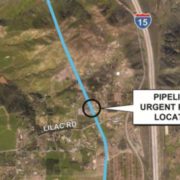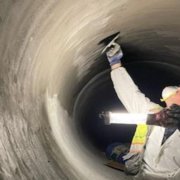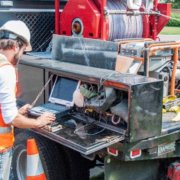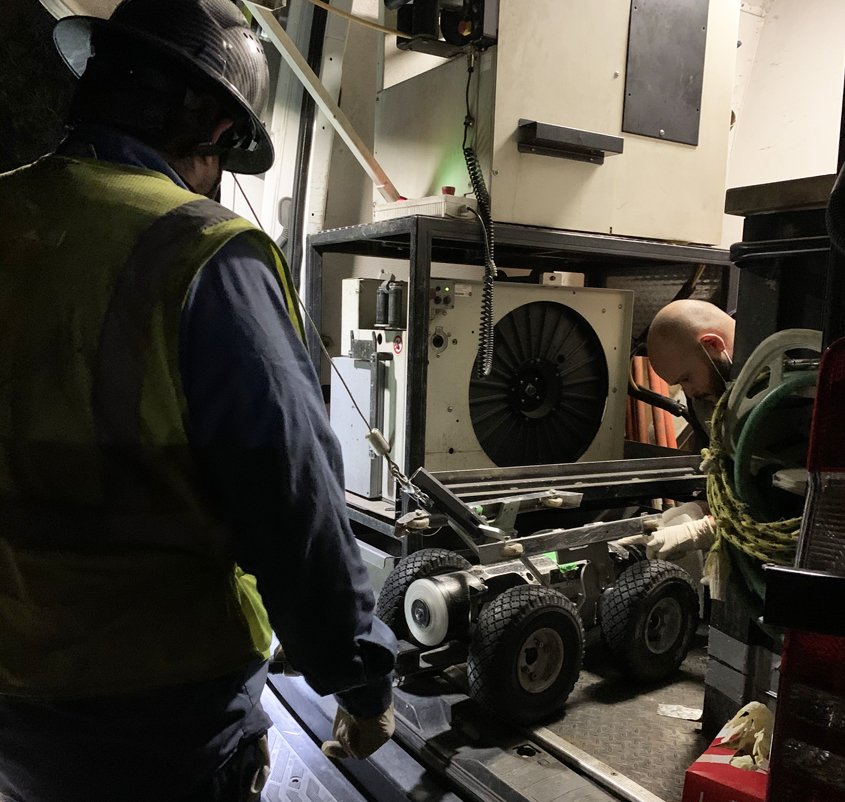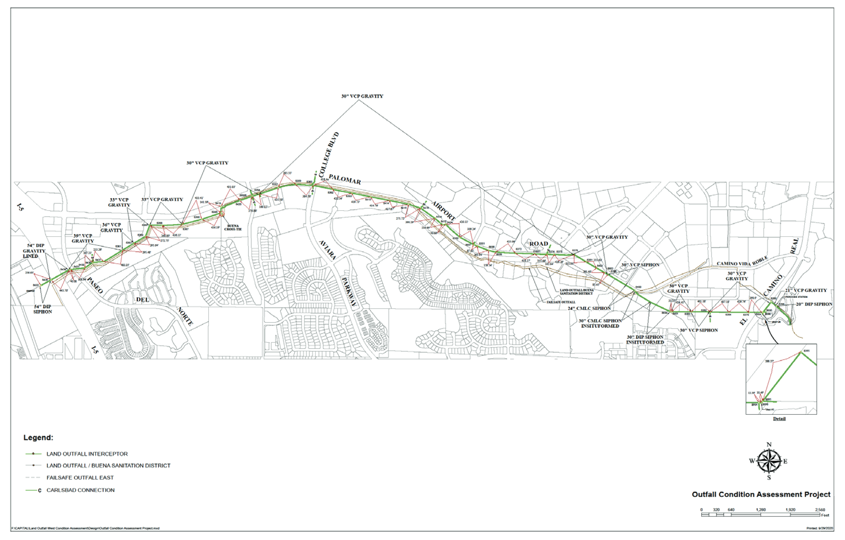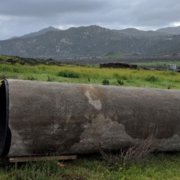The San Diego County Water Authority is proactively fixing a 90-inch diameter pipeline in Bonsall. The work is part of the agency’s long-term commitment to maintaining regional investments in water supply reliability and affordability.
Water Authority staff detected potential pipeline weaknesses just north of West Lilac Road in late January using real-time acoustic fiber-optic monitoring. This technology locates distressed sections of pipelines even while they are in use as part of the Water Authority’s high-tech asset management program.
Further investigation prompted the Water Authority to prioritize repairs on a 48-foot-long section of pipeline. Water Authority staff are carefully monitoring the pipe section around the clock while preparing designs and identifying contractors that can quickly mobilize for repairs.
Water supply affordability
Plans are to shut down and drain that stretch of pipe starting March 1. Work to replace the pipeline segments will continue until the line is back in service approximately 10 days later.
“This repair highlights the value of strategic investments in money-saving asset management tools and training,” said Martin Coghill, a senior manager for operations and maintenance at the Water Authority. “By proactively identifying this problem spot, we prevented what could have been a major unplanned shutdown.”
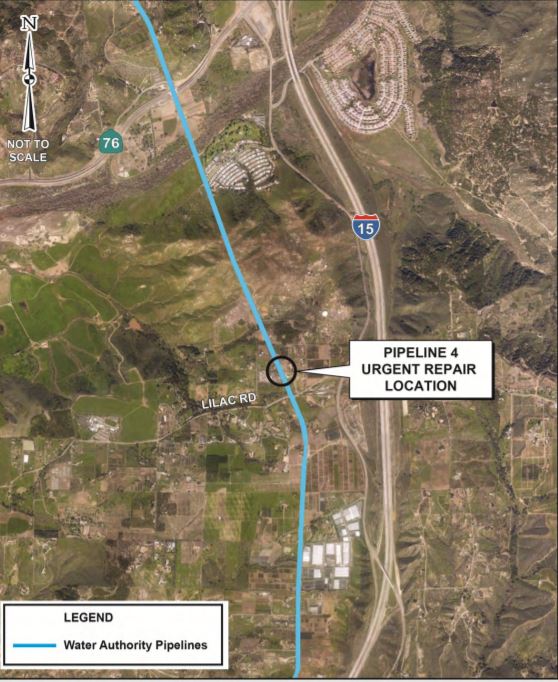
The San Diego County Water Authority is proactively fixing a 90-inch diameter pipeline in Bonsall as part of the agency’s long-term commitment to maintaining regional investments in water supply reliability and affordability. Graphic: San Diego County Water Authority
Coordination, collaboration with member agencies
The Water Authority has been coordinating closely with retail water agencies in North County that rely on deliveries from Pipeline 4. Rainbow Municipal Water District, Fallbrook Public Utility District, City of Oceanside, Valley Center Municipal Water District, and Vallecitos Water District are preparing to continue water deliveries by other means to homes and businesses while Pipeline 4 is out of service.
Fortunately, while Pipeline 4 is shut down the Water Authority’s resilient system can deliver treated water to retail agency connections from multiple sources, including the Carlsbad Desalination Plant.
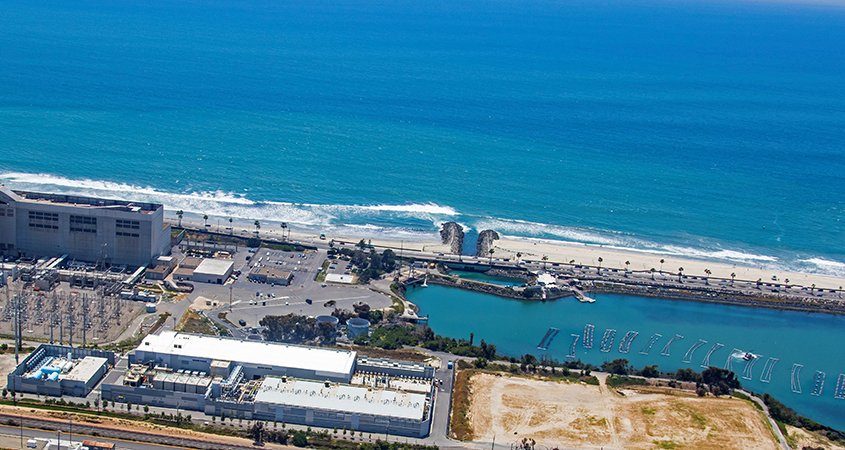
Fortunately, while Pipeline 4 is shut down the Water Authority’s resilient system can deliver treated water to retail agency connections from multiple sources, including the Carlsbad Desalination Plant. Photo: San Diego County Water Authority
Water Authority infrastructure repairs are funded by water ratepayers countywide. Regional investments in supply reliability ensure consistent and timely monitoring, maintenance, and repairs of the complex countywide water delivery system. Those investments, in turn, support San Diego’s regional economy and quality of life.
The Water Authority operates and maintains a water delivery system capable of delivering more than 900 million gallons of water per day through 310 miles of large-diameter pipeline, 1,600 aqueduct-related structures, and approximately 100 metering/flow control facilities. It also includes a state-of-the-art water treatment plant, hydroelectric facilities, pump stations, flow regulatory structures, and reservoirs that store water for emergencies and dry years.
Proactive asset management saves ratepayers money
As assets age, the Water Authority proactively replaces and repairs them to minimize impacts to member agencies and the public. Investments in the latest inspection technologies, including electromagnetic scanning, robotic inspections and 3D tunnel inspections help the Water Authority’s asset management team detect defects in pipelines and related facilities. By identifying corrosion or other types of deficiencies early, potential problems are corrected so they don’t become large and more costly issues.
Approximately 82 miles of the Water Authority’s pipelines are pre-stressed concrete cylinder pipes, also known as PCCP, that are made from a combination of steel and concrete. However, numerous catastrophic failures have occurred with these pipes worldwide in recent decades. In response, the Water Authority instituted a proactive program in 1991 to reinforce the pipelines with steel liners. To date, the Water Authority has relined 47 miles of PCCP.
(Editor’s note: The Rainbow Municipal Water District, Fallbrook Public Utility District, City of Oceanside, Valley Center Municipal Water District, and Vallecitos Water District are five of the San Diego County Water Authority’s 24 member agencies that deliver water across the metropolitan San Diego region.)

